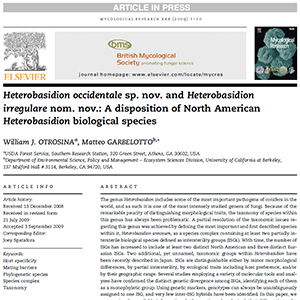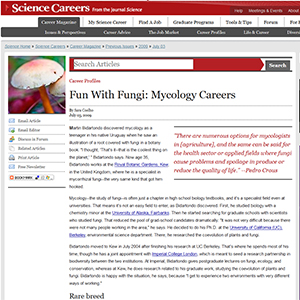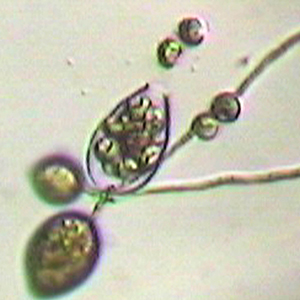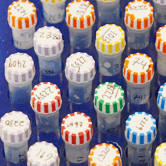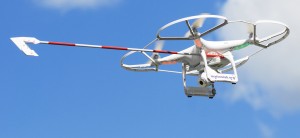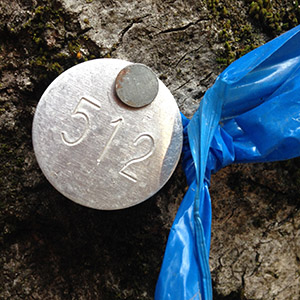When should I remove a tree?
Tree removal is most likely required if the tree is a hazard to property, people, or places where people congregate (paths, camp grounds, etc.) Bear in mind that individual limbs may be more of a hazard than the failure of the entire tree. A certified arborist should be consulted to determine whether tree removal is needed. Proper pruning, fertilizing, and watering of ornamental trees may improve the overall health of your trees and reduce the likelihood of removal.
What is the Critical Root Zone around a tree?
A tree’s Critical Root Zone (CRZ), sometimes also called the Root Protection Zone (RPZ), is defined as a circle on the ground corresponding to the dripline of the tree. Unfortunately the “dripline” of a tree can be irregular and hard to define. An alternative method of determining this dimension is to measure the diameter of the tree trunk in inches at breast height (DBH), multiplied by 12, as so:
Trunk diameter in inches at 4 1/2′ (1.4m) above grade x 12 = radius in feet of the CRZ (essentially, 1′ of CRZ radius per 1″ DBH or roughly 1.2m of CRZ per 10cm of DBH).
Bear in mind that root systems vary by depth and spread based on tree species, age, soil type, etc. The root systems of some oaks, for example, can extend well beyond the canopy dripline. This full root zone may extend 2 to 3 times beyond the CRZ.
Damage to the tree roots can be caused by any disturbance inside this area however bear in mind that nearby trenching, paving, or altering drainage patterns outside the immediate RPZ may also significantly affect the tree.
Will fresh wood chip mulch injure the general health of a tamarack tree?
Mulching should not hurt the general health of a tamarack tree; however, make sure the mulch is not piled up against the tree, but rather 1 foot away from the base of the trunk. The mulch layer should be about 3″- 4″ thick and spread out to the dripline as much as possible for maximum benefit.
Can the Garbelotto lab analyze wood chips for pathogens?
Armillaria is slowly killing my Thuja hedge. What is a comparable replacement hedge that will give me the same amount of privacy and be resistant to this fungus?
The first question to ask is what type of irrigation is being used currently on the hedge. Most landscape oak root fungus problems are due to overwatering in summer months. However, Thuja orientalis (=Platycladus orientalis) is quite susceptible to Armillaria even without heavy irrigation as highly susceptible species do not require excessively high soil moisture to be killed.
Prior to any new planting, as much of the old hedge (including roots) should be removed. In addition, any other decaying wood should be removed. Replanting with plants that do not require supplemental watering is best. Some CA natives that make good hedges include: ceanothus, island mountain mahogany, manzanita, and toyon. Non-native possibilities include Leyland cypress and Japanese privet. Keep in mind though that even plant species listed as resistant to oak root fungus will die if overwatered.
If the stump of a felled tree is left in place, can the roots to continue to grow?
A lot depends on when the tree is felled. If a tree is cut in winter, it is possible that the root system will experience an additional year of growth. What happens to the root system depends on many variables, including soil type and presence of other trees of the same species adjacent to the one being felled. If the same species is present and the root systems of neighboring trees are grafted, the roots may be kept alive by trees still standing. Some species, like aspen, will actually sprout new shoots along the root system. Often a stump with roots that are alive will seal the cambium on the stump surface, resulting in a round bump along the entire circumference of the tree right over the cambial area (i.e. just inside the bark).
My pear tree was looking great. Within a week one of the limbs died and now it looks like the whole tree is dying.
It sounds like your tree is having problems providing enough water to the canopy to keep the foliage and cambium alive. If you are not watering it, that may be the problem. If you are watering it, your tree may have contracted a root disease. In that case, it is important to clear all organic material at least 3 feet around the stem, slightly expose the root system next to the stump to the air, avoid fertilizers, and water minimally.
What are the modifications required for drone canopy leaf sampling?
- Make sure the prop blades are protected.
- Modify the tail to include a collection device. A very sharp blade at a sharp angle allows twigs to be cut off and often to remain caught in the space between the blade and tail.
- Learn how to drive the drone using the camera.
- For more on drones being used for Forestry Research at UC Berkeley, go to https://nature.berkeley.edu/matteolab/?s=drone.
What can cause leaf tip scorch on redwood trees?
Leaf tip scorch symptoms on redwood trees are found from the lower to upper canopy and include healthy leaves interspersed with brown and grey leaves or portions of leaves. Grey leaves typically have black margins into the healthy tissue.
Such symptoms are typically caused by a fungus called Pestalotiopsis funerea. They are commonly associated with drought, when rainfall occurs or when there is overhead watering around the tree. Drought stress predisposes plants to being infected, so the increased moisture facilitates the infection process. Normally the fungus will only seriously affect sprouts, as branches of adult tress will regrow areas killed by the infection within a year. In nursery settings it is important to increase ventilation and avoid big differences in watering regimes to minimize symptoms.
Which trees give off the most oxygen?
Assignment levels of oxygen emission are not precise and different methods can give different results. That said, it is well documented that oxygen release is proportional to the overall leaf mass, also known technically as Leaf Area Index.
There is general agreement that:
- Pines are at the bottom of the list in terms of oxygen release because they have a low Leaf Area Index.
- Oak and aspen are intermediate in terms of oxygen release.
- Douglas-fir, spruce, true fir, beech, and maple are toward the top of the list for oxygen release.
Other than for copper-based sprays, what control methods are available for cypress canker?
There are several products that have been tested for controlling cypress canker. The following paper maybe the most useful one to compare products.
Della Rocca, G., Di Lonardo, V., Danti, R. 2011. Newly-assessed fungicides for the control of cypress canker caused by Seiridium cardinale. Phytopathologia Mediterranea. 50 (1), pp. 65-73.
The most effective active ingredients for preventive treatments appear to be Azoxystrobin and thiophanate-methyl.
A good approach to slow down the disease may consist of:
1) Cutting down infected trees to reduce the chance of contagion. If only a few tips are infected, prune branches rather than take down the entire tree.
2) Cut down all Leyland cypress as it is a major vector of the disease.
3) Treat remaining healthy trees with products containing azoxystrobin (an active ingredient less toxic than thiophanate-methyl).
We have a tree with fungi growing at the base of the trunk. What should we do?
You may want to hire a tree care professional and have them submit portions of the fruiting bodies growing at the base of the tree for analysis. For information on how to send in a sample, go to www.wooddecay.org. The sample must be sent in with a completed submission form and a signed donation letter (forms available at www.wooddecay.org) as well as a check made out to UC Regents (analysis cost is $100 per sample).







